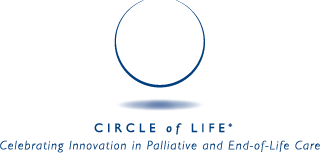Circles of Influence
Highlights of the Continuing Journey of Past Circle of Life Winners
Since the first Circle of Life Awards were presented in 2000, the award has evolved in several ways. The criteria and name expanded to encompass palliative as well as end-of-life care. And the award has evolved from an American Hospital Association award to one that is more expressly owned by those who provide palliative and end-of-life care through the sponsorship of the award by their national associations as well as support from grants from the California Health Care Foundation, based in Oakland, California; Cambia Health Foundation and, earlier, the Archstone Foundation.
Throughout, however, the award's overarching goals of helping to change the way care is provided to the seriously ill and providing models from which the field can learn have remained constant.
In the last decade, the Circle of Life winners have evolved as well. To better understand what these innovators have accomplished and contributed to the field since receiving Circle of Life recognition, the California Health Care Foundation has provided funding for this look at their circles of influence.
Overview
Impact of the Circle of Life Award
-
More recognition, credibility, and support within the organization and in the community
-
More opportunities to assist other organizations in developing their programs
-
More opportunity to collaborate with other providers
-
Boost to staff morale
-
Affirmation of work and commitment
-
Opportunities to educate their own organizations and community about palliative and end-of-life care value
-
Important factor in receiving grants from foundations and other organizations
Award Process
-
Lengthy and difficult application; valuable in forcing organizations to define their programs' mission and goals and quantify outcomes
-
Stimulating and enjoyable site visit
Changes Since Winning the Award
-
Growth in numbers served
-
Expansion of types of services (e. g., most of the early winners making the transition from end-of life to palliative care; others moving palliative care upstream)
-
Expansion of the interdisciplinary team (particularly in hospitals)
-
Greater focus on education and mentoring of others
Lessons Learned
-
The programs need strong champions and commitment from the top
-
Support and funding are not automatic, no matter how respected and recognized the program
-
Ultimately, a program must be financially sustainable as well as the "right" thing to do
Continue reading the Circles of Influence report-2018 updates of each Circle of Life winner and its activities since receiving the Circle of Life Award-by clicking on the links below:
2000 |
2001 |
2002 |
2003 |
2004 |
2005 |
2006 |
2007 |
2008 |
2009 |
2010 |
2011 |
2012 |
2013 |
2014 |
2015 |
2016 |
2017 |
|
|
|


